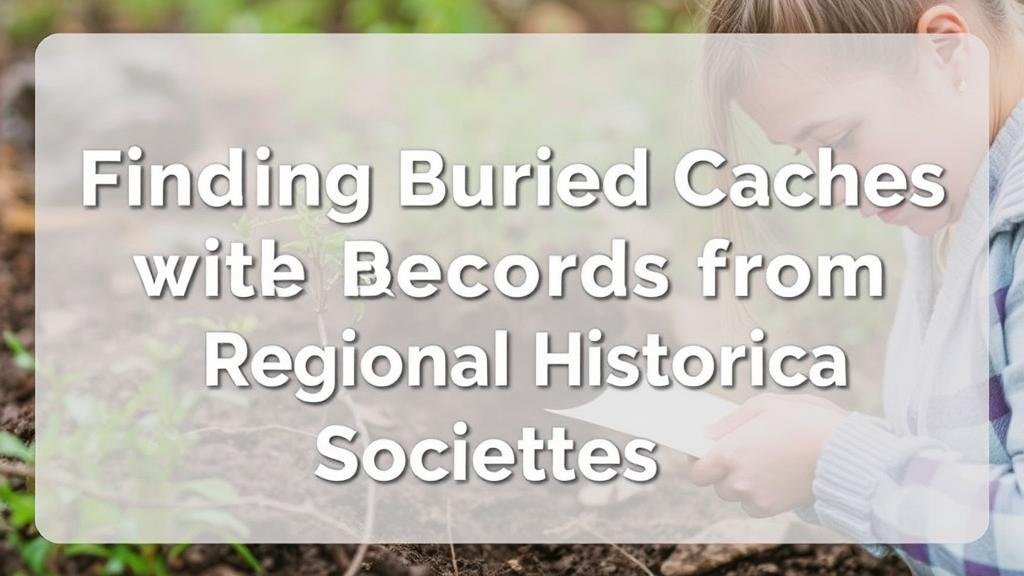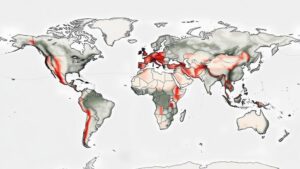Finding Buried Caches with Records from Regional Historical Societies
Finding Buried Caches with Records from Regional Historical Societies
The search for buried caches–collections of valuable items hidden away for various reasons–presents a unique intersection between archaeology and genealogy. Utilizing records from regional historical societies can provide crucial insights into identifying potential cache sites. This article examines methodologies, case studies, and the importance of historical records in locating these caches.
Historical Context
The practice of hiding valuables dates back to ancient civilizations. Historically, individuals or communities would bury treasures as a safeguard against theft, war, or natural disaster. For example, during the Gold Rush in the mid-19th century, miners often buried nuggets of gold and other valuables to protect them from bandits and hostile conditions.
Role of Historical Societies
Regional historical societies play a vital role in preserving local history and providing access to invaluable records including diaries, land grants, and property records. These documents can yield information about former landowners, notable events, and economic conditions that may provide clues to possible cache locations.
Types of Records
Several types of records maintained by historical societies can aid in the search for buried caches:
- Property Deeds: Changes in ownership may indicate the transfer of valuable items.
- Local Newspapers: Articles on local happenings sometimes mention hidden treasures or valuable items lost.
- Cemetery Records: Some caches are known to be hidden near significant burial sites, suggesting a direct connection between the habit of burial during a time of crisis.
- Diaries and Letters: Personal letters and diaries often contain anecdotal evidence that can lead to cache discoveries.
Methodologies for Finding Caches
Finding buried caches involves several methodologies that integrate historical records with modern techniques.
1. Research and Documentation
The foundational step in locating a cache is thorough research. Assessing historical records for any mention of buried items can produce leads. For example, the records maintained by the North Carolina Historical Society document a series of buried caches from the Civil War era as families attempted to hide valuables from occupying troops.
2. Ground Penetrating Radar (GPR)
Once potential sites are identified through records, technologies such as Ground Penetrating Radar (GPR) can be employed. This non-invasive method allows researchers to scan the ground and detect anomalies that may indicate buried objects. GPR has proven effective, with a reported success rate of identifying historical artifacts reaching over 70% in suitable terrains.
3. Excavation and Analysis
If anomalies are located, meticulously planned excavations will ensue. Case studies from historical societies in California reveal that excavating sites identified through thorough research resulted in the discovery of hidden treasures, including gold coins from the late 1800s. Incorporating a multidisciplinary team, including archaeologists and historians, enhances the understanding of the context surrounding the finds.
Case Studies
Several documented cases illustrate the effectiveness of using historical records for finding buried caches.
Case Study 1: The Goldman Cache
In 2017, a cache of gold coins was discovered in a field in Massachusetts, attributed to a local jewelry merchant, Jacob Goldman, who buried his assets during the Great Depression. Historical records from the Massachusetts Historical Society led researchers to a series of transactions linked to Goldman, ultimately leading to the discovery of over 700 gold coins dating back to 1904.
Case Study 2: The Treasure of Fort McHenry
Also, records from the Maryland Historical Society chronicled tales of soldiers who reportedly buried valuables to avoid capture during the War of 1812. Research led to the excavation of a site near Fort McHenry, uncovering military medals and personal possessions from that era, lending credence to the historical narrative supported by documentation.
Challenges and Ethical Considerations
While the search for buried caches is often thrilling, it presents challenges and ethical concerns. Legal ownership of discovered artifacts can become contentious, especially if they are found on private land. Plus, the ethical implications of disturbing historical sites must be considered carefully.
Future Directions
The combination of historical research and modern technology holds immense potential for uncovering buried caches. By continuing to engage regional historical societies and utilizing advanced searching methods, researchers can enhance the discovery process. Collaborative efforts between historians, archaeologists, and local communities remain crucial to responsibly navigate these endeavors.
Conclusion
Finding buried caches through the diligent application of historical records from regional societies not only enriches our understanding of local history but also connects us to the stories of those who came before us. Harnessing the power of these documents alongside contemporary technologies promises to reveal lost treasures, enhancing cultural heritage and community identity.
Actionable Takeaways
- Begin research with local historical societies to understand the regional history and potential cache sites.
- Use modern technologies like GPR to scan areas of historical interest.
- Collaborate with local historians and archaeologists to excavate carefully and ethically.
- Engage with local communities to promote awareness and potentially secure their involvement in research efforts.



